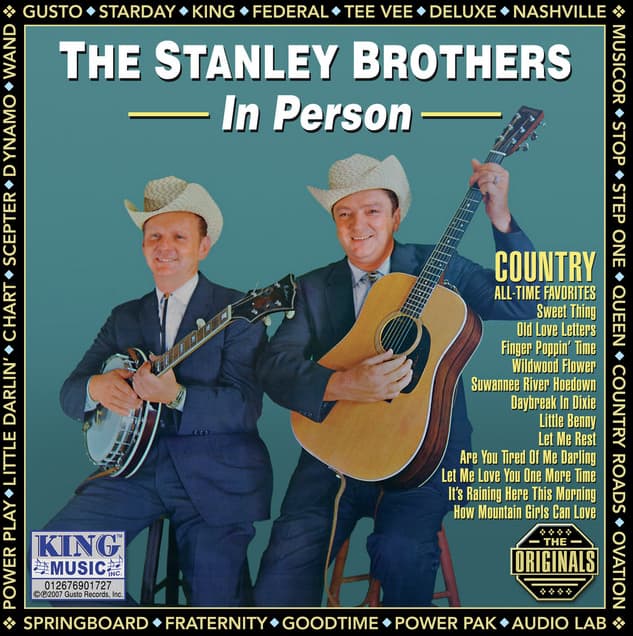
The Stanley Brothers – How Mountain Girls Can Love: A Timeless Ode to Appalachian Spirit
In the heart of the Appalachian Mountains, where the echoes of banjos and fiddles resonate through the misty hills, lies a musical legacy that has transcended time and space. The Stanley Brothers, with their iconic bluegrass harmonies, captured the essence of this rugged yet beautiful landscape in their song “How Mountain Girls Can Love.” Released in 1959, this track quickly became a staple in the bluegrass genre, showcasing the brothers’ profound ability to weave storytelling with heartfelt melodies.
Upon its release, “How Mountain Girls Can Love” did not climb the mainstream charts, as bluegrass was often overshadowed by the rising tide of rock and roll and pop music. However, its impact within its genre was undeniable, solidifying its place as a beloved classic among bluegrass aficionados and music historians alike. The song exemplifies the enduring charm and resilience of mountain culture, making it a perennial favorite at festivals and gatherings across the American South.
Carter Stanley‘s poignant lyrics paint a vivid picture of life in the mountains, celebrating the strength and vitality of Appalachian women. The song’s narrative centers on themes of love and devotion, portraying mountain girls as spirited and steadfast, capable of profound affection and unwavering loyalty. It’s a tribute not only to romantic love but also to the deep-rooted connections that define community life in these remote regions.
The story behind “How Mountain Girls Can Love” is deeply intertwined with the Stanley Brothers’ own lives. Hailing from Dickenson County, Virginia, Carter and Ralph Stanley were born into a world where music was as essential as air. Their father was a talented musician who instilled in them an appreciation for traditional sounds. As they grew up amidst coal mines and rolling hills, the brothers absorbed the rich cultural tapestry around them, which would later infuse their music with authenticity and soul.
This song is more than just a melody; it’s a snapshot of a way of life that values simplicity, hard work, and close-knit relationships. Listening to it evokes images of summer nights spent on front porches, with neighbors gathered around, sharing stories and laughter under a canopy of stars. For many older listeners, it’s a reminder of their roots—of places they may have left behind but never truly forgot.
The instrumentation in “How Mountain Girls Can Love” is quintessentially bluegrass, featuring lively banjo rolls, rhythmic guitar strums, and harmonious vocals that blend seamlessly to create an uplifting soundscape. Ralph Stanley’s high tenor voice soars above Carter’s steady baritone, creating a dynamic interplay that has become characteristic of their style.
As we revisit this classic track today, it serves as both an artifact of cultural heritage and a testament to the enduring power of music to capture human experiences across generations. For those who remember hearing it played on vinyl records or live at family gatherings, “How Mountain Girls Can Love” is more than just a song—it’s a cherished memory encapsulated in three minutes of musical brilliance.
In celebrating this timeless piece by The Stanley Brothers, we honor not only their contribution to music but also the indomitable spirit of Appalachian people whose stories continue to inspire new generations.